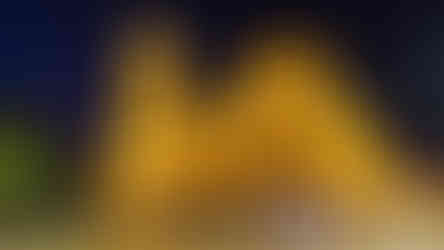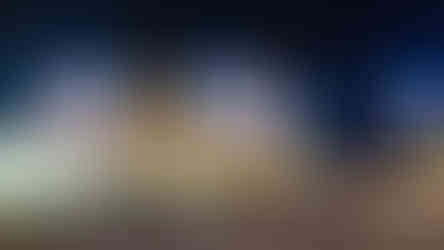SOFIA - BUCHAREST - June 2022
- Bob Anderson

- Aug 3, 2022
- 5 min read
Updated: Dec 4, 2022

This trip was the second casualty of Putin's war against Ukraine. The original plan from the previous December was to visit Ukraine to photograph the metros in Kyiv and Kharkiv. Delta was to provide transportation for transit through Frankfurt as a frequent flyer award. Ukraine's air space was closed following the February 23rd invasion. This replacement trip was a visit to capture the architecture and art installations in the metros of Sofia, Bulgaria and Bucharest, Romania.
The trip became a dance with the devil several weeks before leaving. Getting a refund from Lufthansa for the ticket to Kyiv was a bit of a challenge that didn't immediately happen. A new ticket had to be purchased as soon as possible to combat rising cost as departure was getting closer. Lufthansa rescheduled the connecting flight to an earlier time before arrival in Frankfurt two weeks before the trip. An entire morning was spent getting the new ticket issued which changed the connecting time from 1½ hours to 6½ hours.
Securing accommodations in Bucharest became a game that I eventually lost. Arrangements fell through on two pre-paid apartments before leaving. The third apartment had a difficult to find reception address that wasn't staffed and a non-working telephone number for contact. I finally settled on a hotel which barely kept my medication cold in the mini-bar and then refused to freeze my ice-packs to transport the meds.
Getting to the airport was my responsibility this trip. A taxi was taken to MARTA for the train ride into the airport. The airport was still a mad house two days after the holiday weekend. Getting checked in and through security required 1½ hours. The mileage charge for the direct flight to Frankfurt was beyond my budget while booking the previous trip at the same time. I settled for a connecting flight with a three hour layover in Detroit. Both flight segments were uneventful, as was the Lufthansa flight to Sofia.
I finally arrived at Sofia airport 24 hours after leaving home. A decision was made to wait before getting local currency after getting ripped off by ATM fees at the airport and train station on the previous trip. The metro station was located just outside the terminal. Since I couldn't speak Bulgarian, I wasn't able to tell the ticket agent that I wanted a three-day pass with unlimited use. The Visa card was used to ride the metro. A single ride cost 86 cents (US) and the three day ticket bought the next day cost $ 6.50.
I was fascinated with the Sofia metro from photos seen during research. The ride into the city was used to begin my photo snagging activities in 16 stations. The stations didn't disappoint, especially Line 3, which was finished in 2020 and 2021. These stations have favorable lighting with spacious seating areas on mezzanines above the tracks and colorful tiles at platform level. The only reprimand received in Sofia came that evening. I've become fairly skilled at avoiding transit personnel when photographing.
The 10-minute walk to the apartment was interesting with the sun setting and no street name signs. This is generally a longer walk than normal. The apartment was spacious and included a sitting area in addition to the sleeping area.
Sofia is a fairly prosperous city with many institutions of higher education that are tuition-free. Homelessness is minimal compared to the US. In addition to inexpensive public transportation, the cost of meals was much less than in western European cities. I spent between $15 and $20 per day for lunch, dinner and a breakfast snack. The quality of the food was stellar.
The metro system first opened in 1998 and has 47 stations with the majority of the stations constructed below ground and only five elevated. Station construction is relatively shallow with the exception of Line 3. The stations were not intended to be the bomb shelters found in the cities of other former Soviet-Bloc countries. Lines 1 and 4, sharing the same tracks, employ metallic curtains that raise once the train stops at the platform to dissuade riders from rushing the doors or falling on the tracks.
Rollingstock used in the metro included legacy MWM 81-714/717 Russian train sets made by Metrowagenmash and more recent MWM 81-740/741 Metrowagenmash train sets on Lines 1,2 & 4. The 1970s legacy MWM 81-714/717 equipment is being phased out. Line 3 uses Siemens Inspiro light rail vehicles on Line 3 similar to the rollingstock on Warsaw's Line 2.
The inspiration for night photography wasn't there following research. I did go out and shoot Alexandar Nevsky Cathederal and the National Palace of Culture (NDK) entertainment venue.
The next part of the trip included a 6½ hour over night bus ride to Bucharest covering about 200 miles because airline and train schedules serving the two cities didn't match my schedule. There are no interstate highway roads in Bulgaria. It's all two lane winding roads through the mountains.
This segment ended with a broken roller bag handle at a bus station west of the city that I thought was in the boonies. A cab driver wanted to charge 20 Euros for the trip to the city. I found a polite way to tell him to go get screwed knowing the metro was close by (about 300 meters away). The non-existing apartment would not be available for check in until after 1:30 pm. So the metro took me to the main railway station to park the luggage while more metro stations were photographed. The fare was $6.50 for a weekly pass with unlimited use.
The annoying ticket checkers seen in Budapest and Prague were nowhere to be found in either Sofia or Bucharest.
The Bucharest metro had its own charm, but doesn't match the beauty of the Sofia metro. The bulk of the system was built between 1979 and 1988. The older stations are beginning to show signs of disrepair from inadequate maintenance. The amount of marble, granite and limestone used in flooring and coverings for walls and columns was impressive. The stations were defaced with a fair amount of graffiti and were poorly illuminated.
Bucharest is the only city of former Soviet-Bloc countries that doesn't still employ the Russian Metrowagenmash rail vehicles. This rollingstock has been retired.
The bulk of the fleet consists of Bombardier Movia 346 rail vehicles used on Lines 1, 2, 3 and 5. The rollingstock of Line 2 which is the pride of the fleet. includes rail vehile sets made by Spanish company CAF (Construcciones y Auxiliar de Ferrocarriles). Line 4 uses Astra IVA rail vehicles which have been severely defaced...with graffiti.
The metro system stops running at 10:30 pm which put a crimp in night shooting. I'm not comfortable with using taxis at nights in cities where I'm unfamiliar with the city layout. There have been too many roundabout day time rides where I've been familiar with a city's roads. My attempt at photographing the Basarab Bridge overpass fizzled when I found the lights don't come on until after 1:00 am to save power. Consequently, the only night photos are from the bridge at 9:45 pm twilight. A host of attractions planned for visits never materialized due to closed facilities and special permission requirements. However, an architecturally interesting bookstore (Cărturești Carusel) and shopping mall (AFI Cotroceni Mall) were captured along with the fountains of Piața Unirii.
The weather was extremely favorable during the trip with temperatures ranging between 79°F and 89°F and sunny skies. Summer humidity was beginning its creep. While the visit to Sofia was thoroughly enjoyed, my experiences in Bucharest would lead me not to recommend a visit to others.
For more information and other photographs on the Sofia metro, visit Urbanrail,net
For more information and other photographs on the Bucharest metro, visit Urbanrail,net


























Comments